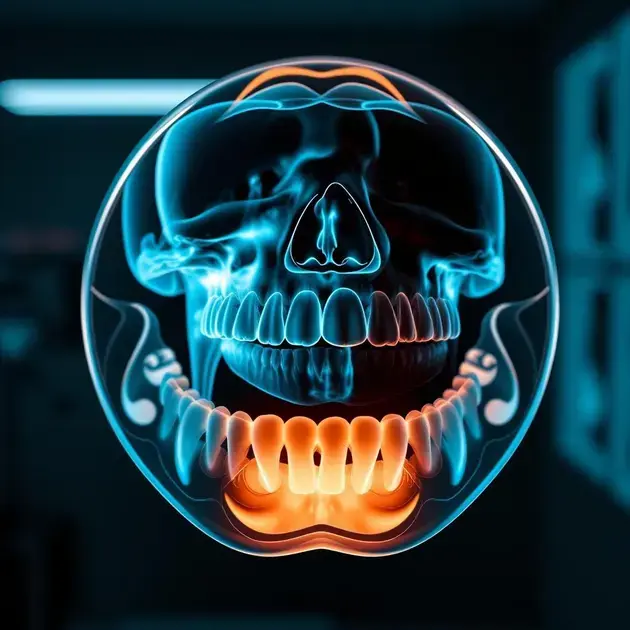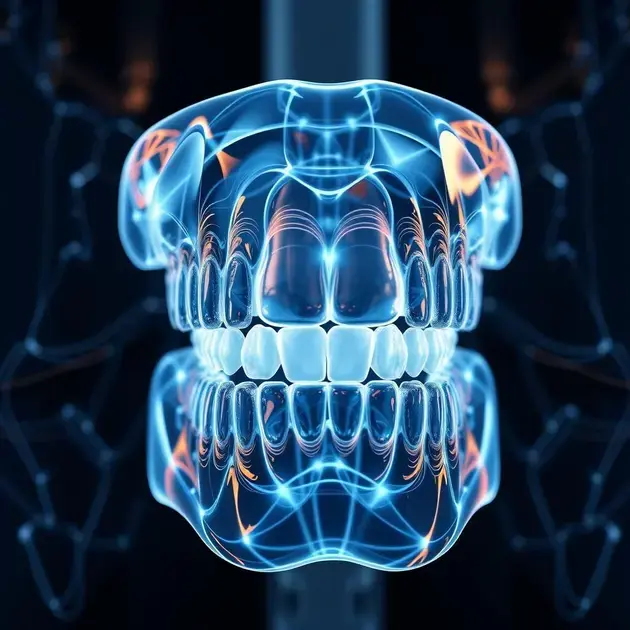The fascinating world of tooth imaging offers a unique glimpse into the hidden beauty and complexity within our mouths. Utilizing advanced technologies, this field allows us to explore the intricate structures and health of teeth in ways that were unimaginable just a few decades ago. These imaging techniques now play a crucial role in dental diagnostics, helping professionals provide more effective and personalized care.
Recent advancements in imaging technology have significantly enhanced the clarity and detail of these images, making it easier for dentists to diagnose issues at an early stage. From digital x-rays to 3D cone-beam computed tomography, the range of tools available to dental professionals has grown, ensuring that patients receive swift and accurate assessments. This leap in technological capability not only improves diagnostic precision but also enriches our understanding of dental anatomy and pathology.

Exploring Tooth Imaging Techniques
When it comes to exploring tooth imaging techniques, one of the most innovative methods available is 3D dental imaging. This technology allows dentists to capture detailed images of a patient’s teeth, gums, and surrounding structures in three dimensions. An example of a popular software used for 3D dental imaging is Dolphin 3D Imaging, which offers advanced tools for accurate diagnosis and treatment planning. To experience this cutting-edge technique, patients can visit a dental clinic equipped with the necessary hardware and software for 3D imaging.
In addition to 3D imaging, another technique worth exploring is intraoral photography. This method involves capturing high-quality images of the inside of the mouth using a specialized camera. Through intraoral photography, dentists can document the condition of a patient’s teeth and gums with clarity and precision. Dentrix Image, a software integrated with Dentrix Ascend, is a recommended option for managing and analyzing intraoral images effectively.
Furthermore, cone beam computed tomography (CBCT) is a valuable tool for obtaining detailed 3D images of the teeth and supporting structures. By utilizing an advanced CBCT scanner such as the CS 9600, dental professionals can visualize anatomical structures with exceptional clarity and accuracy. Dentists can access the CBCT images through software like Carestream Dental’s CS Imaging, which provides comprehensive tools for viewing and analyzing the scan results.
Overall, exploring different tooth imaging techniques can enhance the diagnostic capabilities of dental professionals and improve the overall quality of patient care. By staying informed about the latest advancements in dental imaging technology and utilizing specialized software applications, dentists can provide more accurate diagnoses and personalized treatment plans for their patients.
The Evolution of Dental Diagnostics
Over the years, dental diagnostics have undergone a significant evolution, thanks to advancements in imaging technology and software applications. One of the key milestones in this evolution is the transition from traditional 2D dental X-rays to digital radiography. With the introduction of digital X-ray systems like DEXIS, dentists can now capture and analyze dental images more efficiently, leading to improved diagnostic accuracy.
Another notable development in dental diagnostics is the integration of artificial intelligence (AI) algorithms into imaging software. Applications such as 3Shape AI Scan Body utilize AI to assist in the analysis of dental scans, enhancing the speed and accuracy of diagnostics. By leveraging AI capabilities, dental professionals can identify issues and plan treatments with greater precision.
Furthermore, the advent of augmented reality (AR) technology has revolutionized the field of dental diagnostics. AR applications like Dental Anatomy AR enable dentists to superimpose digital models of teeth onto real-life patient images, facilitating a deeper understanding of dental anatomy and pathology. This interactive approach to diagnostics enhances communication with patients and improves treatment outcomes.
As dental diagnostics continue to evolve, it is essential for dental professionals to embrace innovative technologies and software solutions that can streamline workflows and enhance diagnostic capabilities. By incorporating cutting-edge tools and applications into their practice, dentists can stay at the forefront of dental diagnostics and provide optimal care for their patients.
Enhancing Patient Care with Advanced Imaging
Advanced imaging technologies play a crucial role in enhancing patient care in the field of dentistry. One of the key benefits of advanced imaging is the ability to detect dental issues at an early stage, allowing for prompt intervention and preventive measures. Through applications like Planmeca Romexis, dentists can perform comprehensive analyses of dental images and detect even the slightest abnormalities that may indicate potential oral health problems.
Moreover, advanced imaging techniques such as fluorescence imaging offer a non-invasive way to assess the health of oral tissues and identify early signs of disease. The use of devices like the VELscope VX enhances the visualization of oral mucosa and enables dentists to detect abnormalities that may not be visible to the naked eye. By incorporating fluorescence imaging into routine screenings, dentists can improve the early detection of oral lesions and provide timely treatment.
Additionally, advanced imaging technologies like digital smile design software revolutionize the way dentists communicate with patients and plan aesthetic treatments. Applications like DSDApp empower dentists to create virtual smile makeovers for patients, allowing them to visualize the potential outcomes of cosmetic procedures before treatment begins. This interactive approach enhances patient engagement and satisfaction, ultimately leading to improved patient care.
Overall, the integration of advanced imaging technologies into dental practice not only enhances diagnostic accuracy but also improves patient outcomes and satisfaction. By leveraging innovative imaging tools and software applications, dentists can provide personalized care and achieve optimal results for their patients’ oral health and aesthetic needs.

Discovering the Depths of Tooth Imaging
Dental radiography has revolutionized the field of dentistry by allowing professionals to peer into the depths of the human tooth with remarkable clarity and precision. By utilizing advanced imaging technologies such as cone beam computed tomography (CBCT) and digital X-rays, dentists can now uncover intricate details of tooth structure and identify underlying issues that may not be visible to the naked eye. This breakthrough in dental imaging has significantly improved diagnostic capabilities, leading to more accurate treatment planning and better patient outcomes.
One of the key benefits of tooth imaging is its ability to detect early signs of dental problems, allowing for timely intervention and prevention of further damage. From detecting cavities and gum disease to identifying impacted teeth and oral tumors, dental radiography plays a crucial role in maintaining oral health and overall well-being. With the use of digital imaging software, dentists can enhance and analyze images in real-time, enabling them to make informed decisions about treatment options and monitor the progress of dental procedures.
Moreover, tooth imaging has proven to be invaluable in complex procedures such as root canal treatments and dental implant placements. By providing detailed 3D images of the tooth and surrounding structures, dentists can precisely plan and execute procedures with a higher degree of accuracy and efficacy. This not only reduces the risk of complications during surgery but also ensures long-term success and durability of dental restorations.
In addition to its diagnostic and therapeutic benefits, tooth imaging has also enhanced patient education and communication in the dental office. By visually presenting the findings of dental radiographs to patients, dentists can involve them in the treatment process and address any concerns or questions they may have. This transparency fosters trust and confidence between the dentist and the patient, ultimately leading to a more satisfying dental experience for everyone involved.
Innovations in Dental Radiography
The field of dental radiography has witnessed remarkable innovations in recent years, transforming the way dental professionals capture, analyze, and interpret images of the oral cavity. Traditional film-based X-rays have been largely replaced by digital radiography, which offers numerous advantages such as reduced radiation exposure, enhanced image quality, and instant image retrieval for immediate diagnosis. These technological advancements have revolutionized the practice of dentistry, making it safer, more efficient, and more patient-friendly.
One of the most significant innovations in dental radiography is the introduction of cone beam computed tomography (CBCT), a cutting-edge imaging technique that provides detailed 3D images of the teeth, jaw, and surrounding structures. CBCT is particularly useful in complex dental procedures such as orthodontic treatment planning, dental implant placements, and oral surgery, where precise anatomical information is essential for success. By utilizing CBCT technology, dentists can achieve superior treatment outcomes and improved patient satisfaction.
Another notable innovation in dental radiography is the integration of artificial intelligence (AI) and machine learning algorithms in image analysis software. These advanced tools enable automatic detection of pathology, analysis of treatment outcomes, and prediction of potential risks, enhancing the diagnostic accuracy and efficiency of dental radiographs. By harnessing the power of AI, dentists can streamline their workflow, reduce diagnostic errors, and deliver personalized care tailored to the individual needs of each patient.
Furthermore, advancements in sensor technology have led to the development of portable and handheld X-ray devices that offer greater flexibility and convenience in dental imaging. These compact devices are ideal for use in emergency situations, mobile dental clinics, and geriatric care settings, where traditional X-ray equipment may be impractical or inaccessible. By embracing these technological innovations, dental practices can enhance their diagnostic capabilities, improve patient care, and stay at the forefront of modern dentistry.
**
Conclusion
**
In conclusion, tooth imaging through advanced technologies like cone beam computed tomography (CBCT) and digital X-rays has revolutionized the field of dentistry. This breakthrough has significantly enhanced diagnostic capabilities, allowing dentists to identify intricate details of tooth structures and underlying issues early on, leading to more accurate treatment planning and improved patient outcomes. The ability to detect dental problems such as cavities, gum disease, impacted teeth, and oral tumors at an early stage enables timely intervention, preventing further damage and maintaining overall oral health.
Furthermore, the use of tooth imaging, especially in complex procedures like root canal treatments and dental implants, provides dentists with detailed 3D images for precise planning and execution. This not only ensures a higher level of accuracy and efficacy in procedures but also contributes to the long-term success and durability of dental restorations, ultimately benefiting the patient. The transparency facilitated by visually presenting radiographic findings to patients enhances communication, fosters trust, and encourages patient involvement in the treatment process, resulting in a more satisfactory dental experience for all parties involved.
Moreover, recent innovations in dental radiography, such as the integration of artificial intelligence (AI) and machine learning algorithms, have further improved diagnostic accuracy and efficiency. These advancements, along with the development of portable X-ray devices, have transformed the practice of dentistry, making it safer, more efficient, and patient-friendly. By embracing these technological advancements, dental professionals can enhance their diagnostic capabilities, provide personalized care tailored to individual patient needs, and stay at the forefront of modern dentistry, ensuring better overall outcomes and patient satisfaction.
